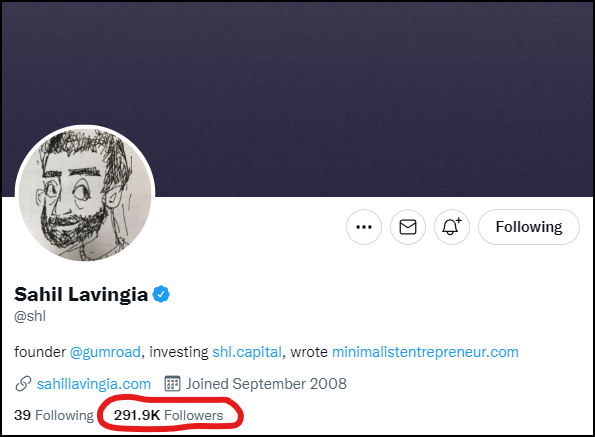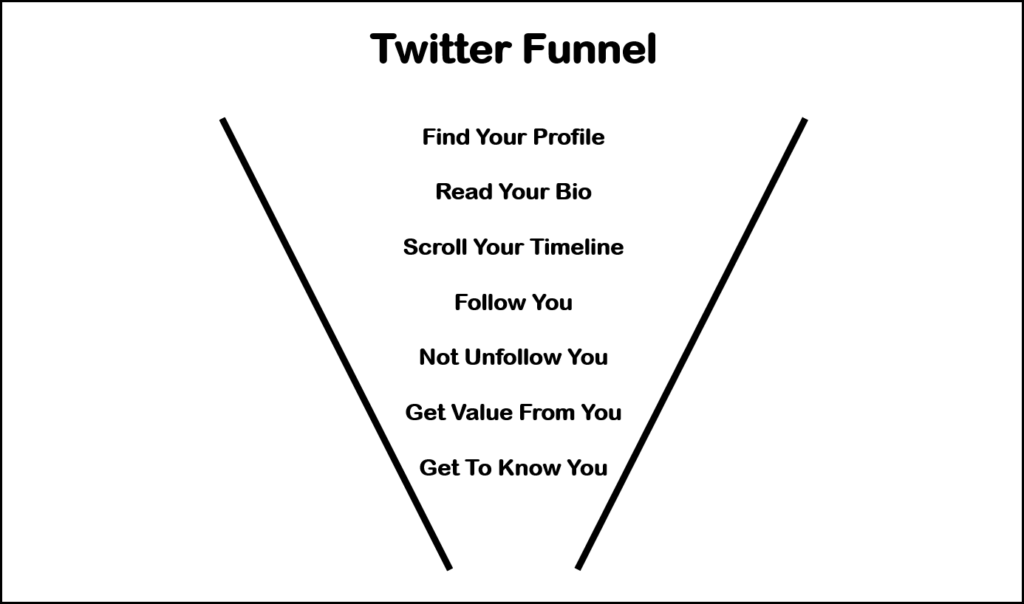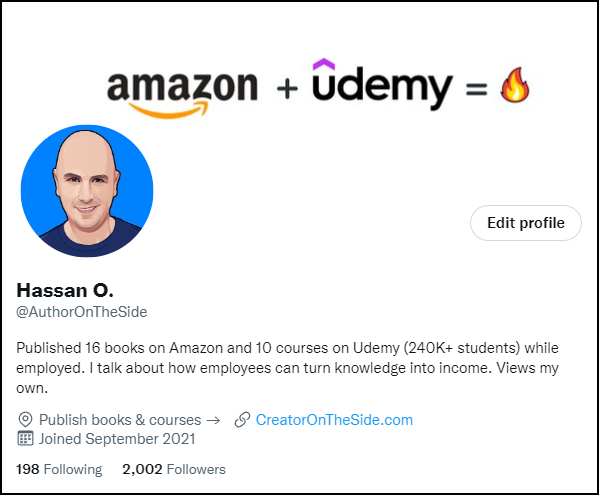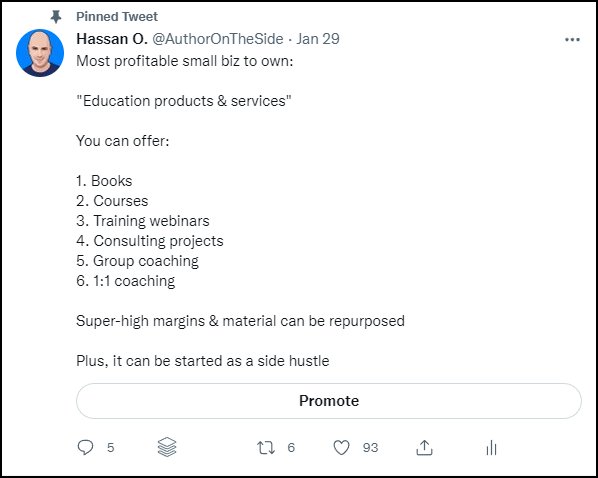
A while ago, I purchased a course by Daniel Vassallo called “Everyone Can Build a Twitter Audience” (aff link).
I had connected with Daniel as a guest on one of my earlier podcast episodes where he discussed how he made over $40,000 in 16 days after launching his book, “The Good Parts of AWS.”
Most of his book sales came as a result of his Twitter audience. And in this course, he talks about all his Twitter secrets.
First, a quick disclosure. I was so impressed with the course, and I got such amazing results from it myself that I asked Daniel if I can be an affiliate of his product (he agreed; so I would make a cut if you purchase).
My endorsement & statement about the benefits I got from his course are even listed on his course page.
Here’s a screenshot.
Daniel still follows those same strategies that he recommends, and he’s now at 130,000+ Twitter followers (and counting).
He gets more engagement on every tweet he puts out compared to any other Twitter user I follow.
Here are 3 takeaways that I learned from “Everyone Can Build a Twitter Audience.“
Lesson #1 Twitter Followers Don’t Matter; Engagement Does
It’s very hard to measure success on Twitter. But one thing is obvious. The number of Twitter followers you gain doesn’t really mean a lot.
I’ve seen several Twitter users who have over half a million followers, yet barely get a single like or comment on their tweets.
This probably means that those tweets are not getting a lot of impressions, and if they are, they’re not adding enough value for followers to engage.
I’ve also seen several twitter users with fewer than 500 followers who get a fairly high level of engagement (likes, retweets, comments) on their tweets.
Here are a couple of examples that Daniel highlights:
Tim O’Reilly, the founder and CEO of O’Reilly Media, has 1.6 Million followers.

However, one of his latest tweets shows a fairly low level of engagement for someone with that many followers.

On the other hand, Sahil Lavingia, the founder of Gumroad, has around 292K followers.

And here’s one of Sahil’s latest tweets

Although Sahil has less than 20% of Tim’s followers, he got around 22X of the number of likes alone.
Of course, there are many factors that affect tweet engagement and this is not a fair apples-to-apples comparison, but it gives you a general sense of why the follower count metric doesn’t necessarily translate into anything meaningful.
The takeaway is that I’d rather have people who want to hear what I have to say (and interact publicly with me) than have an artificially high number of followers.
Lesson #2 Think About Your Twitter Funnel
Your Twitter funnel is how a Twitter user turns into a follower.
Here’s a screenshot from “Everyone Can Build a Twitter Audience” about how that looks like.
To me, the first three elements are the most important.
People find your profile when you tweet something of value, and someone they follow engages with your tweet. Or they find your profile if you comment on someone else’s tweet, and they happen to follow them.
The key idea is that you should always be adding value in your tweets and replies by being thoughtful about what you write.
But that’s probably not enough to turn someone into a follower. You have to optimize your Twitter funnel so that you give people a reason to follow you.
After someone finds your profile, they typically read your bio and scroll through your timeline before they make a decision about whether they want to follow you or not.
Here are a few things you should think about:
- Your bio
- Your pinned tweet
- Your last few tweets
All those elements should answer the question: why should people follow me?
Your bio should give a brief overview of what you do and who you are to establish credibility in your space. There’s no exact science to this, and you can update your bio over time.
For example, I mainly tweet about writing & publishing books and courses on the side.
So here’s how my bio looks like.
And to give folks a flavor of the type of tweets or updates they can expect, my pinned tweet is about the type of profitable business you can build on the side.
My last few tweets are also a mix of things I’m interested in that are related to business, writing, and creating courses.
People can decide to follow me based on all of those elements, so make sure you take advantage of optimizing them for your profile.
Lesson #3: Give More Than You Ask
According to Daniel, there are two types of tweets. Giving tweets and asking tweets.
Giving tweets are those where you add something of value to your followers. This could be nuggets of info that could help them or inspire them.
Although this is hard to define, the bar for Daniel is pretty low, and from his perspective, you want your audience to “not regret” stopping their scrolling and reading your tweet.
Asking tweets are those that you’re requesting something from your followers, such as asking them questions or selling them on something. Even running a poll is considered an ask because you want your followers to take some sort of action for you.
There’s nothing wrong with asking, but you have to give way more than you ask.
In fact, Daniel recommends that if you’re just starting out, do not ask for anything until you’ve done a lot of giving first (he kept on giving and building an audience of more than 6,000 followers before selling anything).
So how do you give?
You obviously need to add value in every tweet, but you also need to engage with anyone who takes the effort to engage with you.
If someone comments, asks a question, or retweets you, make sure you put in the effort to respond or at least acknowledge their interaction with you. Similarly, make sure you responded to every DM (direct message) as well.
This will help you build a relationship with your followers, and lets them know you care about your audience.
Of course, the more you grow, the harder it becomes to scale to respond to everyone, but signaling that you’re listening encourages more engagement, which eventually leads to more followers.
Everyone Can Build a Twitter Audience by Daniel Vassallo – Conclusion
The course certainly delivers, and I keep going back to the slides to get a refresh on the lessons I learned.
It’s fairly short (less than two hours) and it’s jam-packed with a lot more tips and stats that’ll help you build your own audience.
For example, another tidbit he mentions is the idea of adding a single call to action (CTA) at the end of your blog posts asking people to follow you on Twitter (and avoid adding multiple CTAs because that could be suboptimal).
So on that note, if you enjoyed this post, you can follow me on Twitter by clicking here 😉



